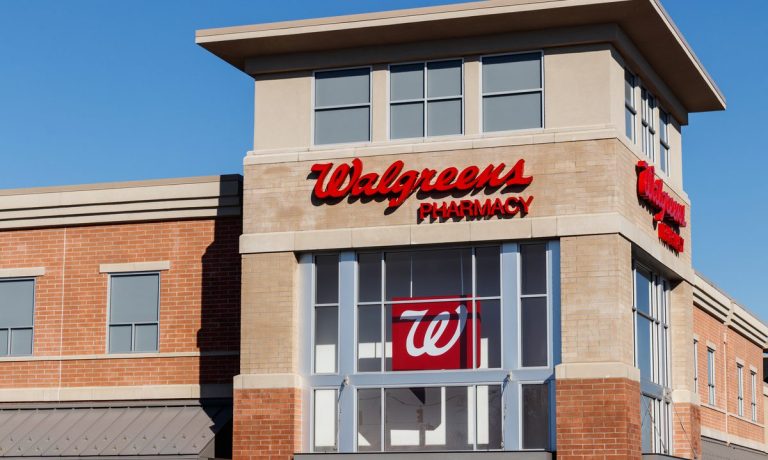
In what could be characterized as the latest entry in the “COVID-19 Changed Everything” file, Walgreens Boots Alliance said Thursday (Oct. 13) that it is simplifying its operations under three business segments as part of its transformation to become a “consumer-centric healthcare” company.
This, as the Chicago-based retail chain, which operates 13,000 stores in the United States, Europe and Latin America, told investors in an earnings report that sales at its largest unit — the U.S. Retail Pharmacy segment — fell 7% in its fiscal fourth quarter that ended Aug. 31, while its exponentially smaller U.S. Healthcare unit saw sales up 34%.
“Our script count is the one soft spot for the year to call out,” Walgreens CEO Rosalind Brewer said in the company’s webcast, noting domestic digital sales were up 34% for the 2022 fiscal year.
With prescriptions down alongside a retreat in COVID-19 vaccines and related care, Walgreens — like all of its major peers — is making a shift to deliver a range of treatments and services to customers that go well beyond dispensing medicine.
“We are rapidly scaling U.S. healthcare and are already raising long-term sales targets with a clear path to achieve profitability starting in fiscal year ’24,” Brewer said in the webcast. “It’s early, but our strategy is working, and we’re making good progress on each of our four priorities, which are simplifying and strengthening the company.”
Simple and Strong
While simplicity and strength are laudable objectives for any business, the fact remains that Walgreens stores accounted for 82% of its revenue — or $26 billion of its reported top line of $32 billion — compared to just $622 million delivered by its now elevated U.S. Healthcare business.
Even so, Walgreens’ leadership team told investors that this is the perfect time to build and broaden the business, citing the historic macro challenges that are affecting its customers.
“With inflation at a four-decade high, consumers are expressing uncertainty about the future and seeking value,” Brewer said, noting the increased priority customers are placing on health and wellness today, versus just two years ago, in what is set to be a lasting side-effect of sorts from the pandemic.
With that increased priority in mind, Walgreens aims to boost cohesion between its units to fuel the delivery of more services to more customers more quickly and conveniently than before.
“We’re leveraging our footprint, our digital capabilities, our consumer insights and our essential services to drive overall retail pharmacy growth,” Brewer said, calling the core business resilient and “over-indexed to need-now categories.”
“We are better positioned now than we were in prior periods of economic turbulence,” she added.
In-Home Care
In addition to continued expansion of the COVID-era’s increased in-store activities, Walgreens is touting its boosted offering in the rapidly growing in-home treatment business as a centerpiece of consumer-centric focus, as evidenced by the accelerated acquisition plan to full ownership of CareCentrix announced earlier this week. When CareCentrix is added to Walgreens’ Village MD and Shield units, Brewer told investors that the combination has delivered top-line growth of 75% within its U.S. Healthcare segment
“We’re making important strides and consistent progress and building our next growth engine,” Brewer said.
For all PYMNTS retail coverage, subscribe to the daily Retail Newsletter.